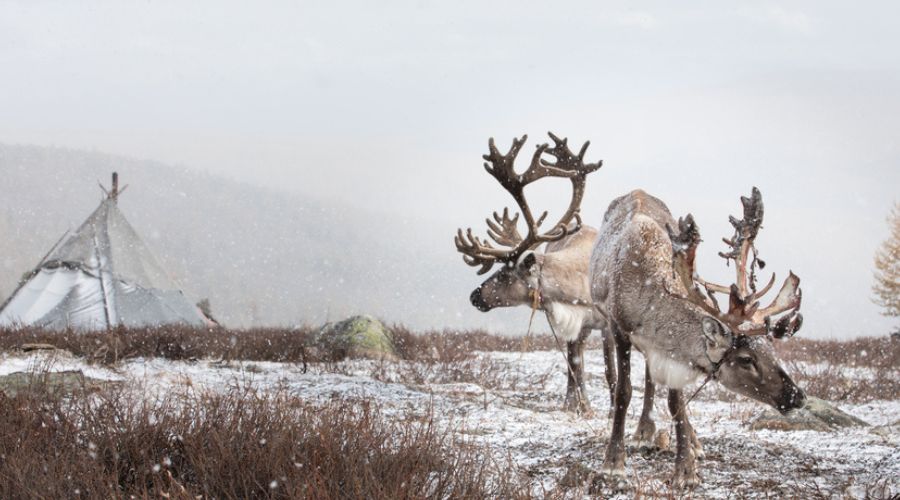Over 2 million livestock dead due to extreme weather
29th February 2024
Mongolia’s harshest winter since 1975 has lead to the deaths of 2.1 million head of livestock so far, due to starvation and exhaustion.

This winter in Mongolia has been more severe than usual, with temperatures dropping as low as minus 50 degrees Celsius in some areas and very heavy snowfall.
The United Nations has highlighted the gravity of this year’s ‘dzud’ (a slow-onset disaster, resulting in gradual livestock mortality over time due to a prolonged combination of malnutrition and cold stress), a phenomenon resulting in massive livestock losses, with 70% of the country currently experiencing these conditions. This is a significant increase from 17% the previous year.
It has led to disruptions to travel, trade, and school openings, and has severely impacted access to health services, especially for people living in rural areas.
Animals have been left in an especially difficult situation, as after the summer drought, they do not have sufficient fat reserves to withstand the winter.
Heaviest snowfall since 1975
At the end of 2023, Mongolia had 64.7 million animals, including sheep, goats, horses and cows. Its nomadic herders, who make up about a third of the country’s population, are particularly vulnerable.
The extreme weather and the heaviest snow since 1975 have not only resulted in a scarcity of grazing grass due to snow-covered pastures turning to ice, but they have also isolated herders, making it challenging to procure feed and hay from nearby towns.
Mongolia has experienced six dzuds in the past decade. During the winter of 2022 to 2023, 4.4 million head of livestock perished. The deadliest dzud recorded was in the winter of 2010 to 2011, when over 10 million animals died.
The UN said climate change is increasing the frequency and intensity of dzuds.
Snow turning into ice
Herder Tuvshinbayar Byambaa told AFP: “The winter started with heavy snow, but suddenly air temperatures rose, and the snow melted. Then the temperatures dropped again, turning the melting snow into ice.”
That ice makes it hard for the livestock to break through to the grass below, he said, preventing them from grazing and forcing many herders to borrow money for feed.
“The weather changes are so sudden these days,” Tuvshinbayar added.
READ MORE: Farmers have been assessing the damage after Storm Henk hit many parts of the country
Extreme UK weather
Farmers across across parts of England, Wales, Scotland and Ireland have also been dealing with unpredictable weather.
Rapidly rising water levels during consecutive storms were dangerous for livestock, which meant they could not get to safe lying areas or access food. Farmers were advised to, where possible, move livestock ahead of time to fields with suitable drainage and an area where animals can stand out of the mud or damp.
Agriculture and Horticulture Development Board (AHDB) has shared a few tips for livestock farmers facing flooding on their lands. This includes checking the feed for spoilage or contamination and assessing animals’ health.
Standing in water and deep mud can predispose animals to, and aggravate, infections and diseases, such as foot rot. The youngest, oldest and pregnant animals, and those kept in high stocking densities, will be most prone to stress and health issues. Discuss the conditions with your vet, who may be able to help to develop a control plan.



